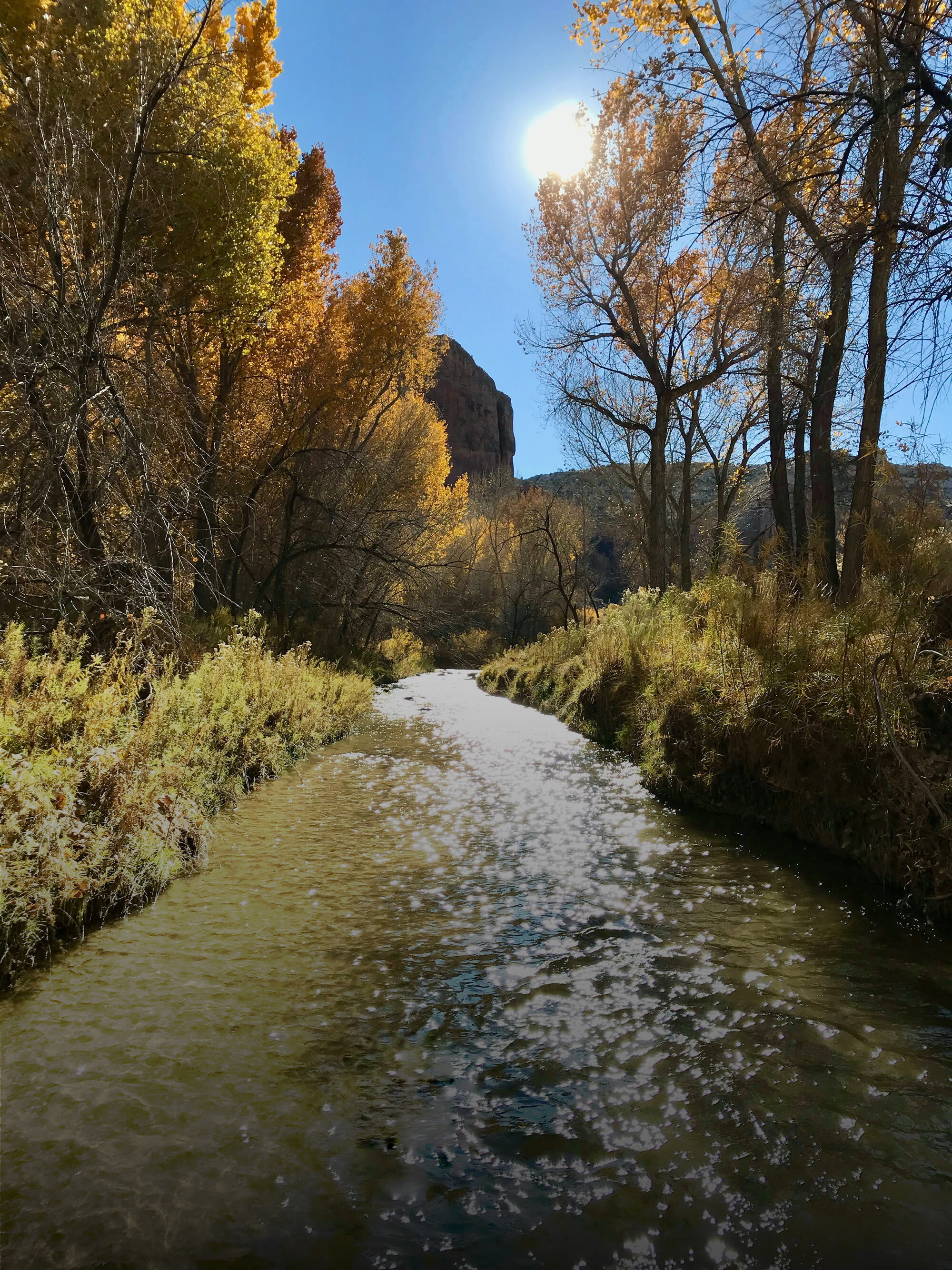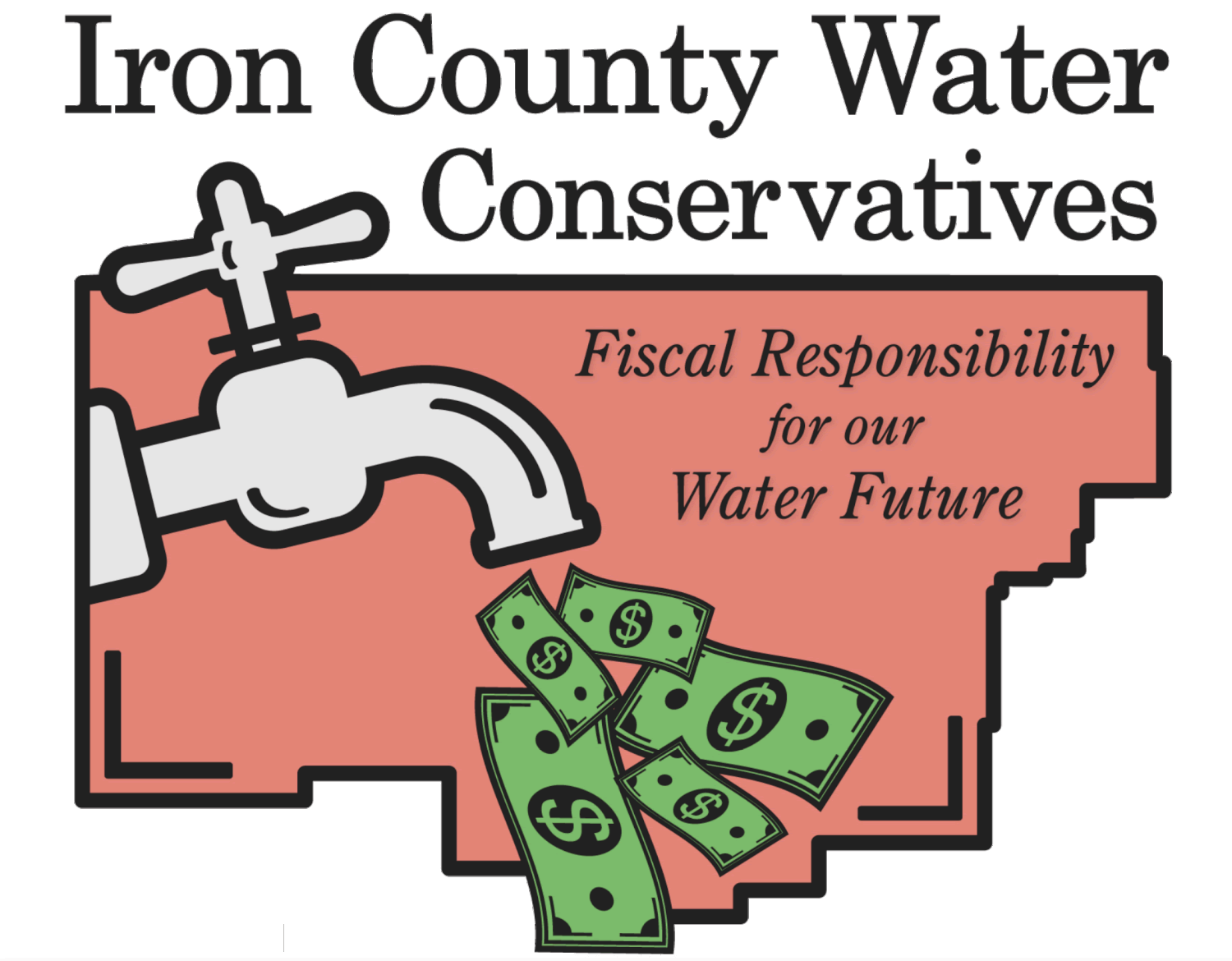
Alternative Sources of Water
Inexpensive Alternatives Vs. $260 Million in Government Spending & 700% Water Rate Increases
If you had the option to choose between two products of equal value but one cost less than the other, which one would you choose?
Instead of implementing some of the many inexpensive alternatives to provide water for Iron County residents, the Central Iron County Water District (CICWD) is proposing to waste $260 million through unnecessary government spending. An array of inexpensive alternatives exist to provide water for the future, many of which are commonly implemented across the American West. Yet this government water agency is choosing to waste your tax dollars on the unnecessary Pine Valley Project.
Inexpensive water supply alternatives.
There are at least four inexpensive alternatives to the $260 million Pine Valley Project that would avoid the need to raise your water rates or waste your tax money, especially if they are all implemented together.
Alternative 1. Embrace the Free Market
The CICWD charges some of the lowest water prices in the U.S., which is why the water use is so high and existing ground aquifers are being mined faster than they can be replenished by nature. Although at first cheap water rates seems like a good deal, this tax policy is the definition of penny-wise and pound-foolish.
That’s because Iron County residents and businesses pay a hidden tax on their property to greatly lower the price of water. County residents pay a property tax on homes, businesses and even automobiles, which forms the majority of the revenues the CICWD receives every year. If a water district makes more money collecting property taxes than from selling water, shouldn’t we call them the Central Iron County Property Tax District?
Nearly 70 percent of the Central Iron County Water District’s (CICWD) revenues come from the collection of property taxes, according to their own audited financial statement. For every $1 in water sales, CICWD brings in nearly $3 from property taxes. This lowers the price of water, incentivizing customers to waste water. Large water users, especially tax-exempt agencies, are not paying for the full cost of their water use, instead leaving working families to foot the bill.
By collecting the majority of their revenues from property taxes, the Iron County Water District is encouraging water waste and the overuse of water, especially by large landowners and institutions. These property taxes explain why the price of water in Cedar City is so much less than in other cities in Utah and the rest of the American West.
If the Iron County Water District reduced the amount of property taxes they collect – giving you a tax break – they would have to raise water rates on the biggest water users, which would lower water use and conserve our aquifers. Phasing out property taxes for water is the fiscally-conservative alternative because lowering water use reduces treatment costs, operation and maintenance costs, and defers or eliminates the need for new water sources, like the Pine Valley Project.
This water rate graph shows that Cedar City residents and institutions pay some of the least-expensive water rates in the American West. This is because local taxpayers are subsidizing their neighbors to waste water in the property taxes they pay on homes, cars and businesses. Many of these other cities do not pay property taxes to lower the price of water, which explains why these cities use less water than Cedar City residents.
The Central Iron County Property Tax/Water District is ignoring the free-market and encouraging wasteful water use by over-collecting property taxes. This tax policy is wasting Iron County aquifers. Call your city council member and your county commissioner and tell them to stop the over-collection of your property taxes today. Ask them if they know how much money the Iron County Water District collects in property taxes versus from water rates.
Alternative 2. Convert Surplus Agricultural Water
Roughly 85% of Utah’s water supply is used by our wonderful farms and ranches. But Utah loses 30 acres of farmland each day to urban development as our farms are converted to suburbs.1 While the paving of Iron County’s farmland is nothing to celebrate, this land conversion creates a surplus of water because urban lands use less water per acre than agricultural lands. Unlike the vast acreage of irrigated farmland, a large portion of the urban landscape isn’t watered at all because it is covered by roads, parking lots, sidewalks, driveways, rooftops and other uses which have little or no water demand.
In other words, our municipal water supply is growing with the paving of the agricultural sector. This is because an acre of urban land uses 3-4 times less water than an acre of agriculture land. The majority of water used in our cities is outside on lawns, meaning the amount of grass covering our cities is the biggest indicator of water demand.2 A 2015 Legislative Audit on future water needs confirmed this finding, as can be seen from the title of chapter 4, which noted that Growth in Future Water Supply Should be Reported to Policy Makers.
The Central Iron County Property Tax/Water District has failed to consider agricultural water transfers in planning for their future water supply, because they want to make the case for wasting $260 million on the Pine Valley Water project using your tax money.
Alternative 3. Install meters on Secondary Water Users
Secondary water users offer some of the biggest opportunities to save water in Iron County and in Utah. Secondary water systems are essentially just farm canals that were converted to outdoor watering in suburbs after a community’s previous agricultural era ended. Secondary water systems are untreated water and can’t be used for culinary uses, like drinking, bathing or cooking, which is why it’s called ‘secondary.’ Because it is still a canal system, most of these secondary users are unmetered, meaning there is no measurement of how much water is being used.
Installing meters on secondary water systems can greatly reduce Iron County’s water use. Secondary water use encourages waste because unmetered systems mean users have no idea how much water they are using. In addition to not knowing how much water they use, secondary water users pay just an annual fee for virtually unlimited water, leading many to over-consume water. One study found that secondary water users in Utah use 100% more water than they should.
According to another study conducted by Utah State University researchers, installing meters lead to significant water savings. After installing meters on hundreds of secondary water connections, users were sent a monthly summary of their water use. After three years, the researchers found that water use declined by an average of 25% on the metered connections, compared to their unmetered neighbors.3 This reduction occurred without any mandate or increase in secondary water rates but simply by providing users with information about how much water they used, or overused each month.
The potential water savings from metering secondary water use in Iron County could delay or eliminate the need for the Pine Valley Project. Ignoring this simple alternative will end up costing ratepayers and taxpayers $260 million due to out-of-touch water agency leadership.
Alternative 4. Reuse Water
The water used in our cities is known as grey water and can be reused again for other purposes, such as irrigation or groundwater recharge, among other uses. The first reuse water facility was built in San Francisco’s Golden Gate Park in 1932, and have since become common place across the country.
Cleaning and reusing water that has already been diverted or pumped from a well is a common and an inexpensive alternative to new diversions or new wells. The Pine Valley Water Water Needs Assessment, authored by the Iron County Water District itself, notes that simple improvements to Cedar City’s existing wastewater treatment plant could generate an additional 2,000 acre-feet of water per year by simply reusing water.4
These wastewater treatment plant improvements would cost $21 million and the water savings amount to $10,500 per acre-foot.5 By comparison the Pine Valley Project would cost $260 million and deliver 15,000 acre-feet of water, at a rate of $17,300 per acre-foot. That makes the Pine Valley Project water nearly 70% more expensive than water from the reuse alternative.
Central Iron County Water District’s study proves that less expensive alternatives exist.
The Central Iron County Water District’s own Financial Business Plan and Water Needs Assessment analyzed water supply alternatives and found they would cost less money to ratepayers and taxpayers.6 The studies considered four alternatives to the Pine Valley Project that could provide water for the future at less cost.
Two alternatives would cost significantly less than the Pine Valley Project and keep aquifers at safe water levels. This would reduce the need for farmers and ranchers to sell their water rights, protecting our prized farmland for generations to come. As seen in the chart below, Alternative #3 and #4 cost $56 million and $68 million respectively, both significantly less than the $260 million Pine Valley Project.
These alternative sources use a combination of agricultural water conversion, increased conservation policies and technologies, recharging the aquifer and reusing water. These alternative sources also mitigate impacts to water rights owned by farmers and ranchers while saving hundreds of millions of dollars and the need for a 400-700% water rate increase. These alternatives are a win for everybody, so why is the water district still pursuing the Pine Valley Project?
It’s time the CICWD stop ignoring less-expensive alternatives and embrace a future that’s fiscally-conservative.
Citations
- American Farmland Trust. Farms Under Threat: The State of the States. (2020). https://s30428.pcdn.co/wp-content/uploads/sites/2/2020/09/AFT_FUT_StateoftheStates_rev.pdf
- Utah Division of Water Resources. Outdoor Watering Guide. (2021). https://conservewater.utah.gov/weekly-lawn-watering-guide/
- Coleman, Richard, James Behunin, Tyson Cabulagan, and Anndrea Parrish. A Performance Audit of Projections of Utah’s Water Needs (Report #2015-01). Salt Lake City, UT: State of Utah Office of the Legislative Auditor General, 2015, p. 37.
- Carollo, Central Iron County Water Conservancy District. Pine Valley Water Supply and Conservation Project: Financial Business Plan and Water Needs Assessment, June 2020, Pg. 25 https://cicwcd.org/wp-content/uploads/2020/06/2020-5-21-PVWSProject-FBP-WtrNeedsAssmt_Final-Report-June-2020.pdf
- Ibid.
- Ibid.




